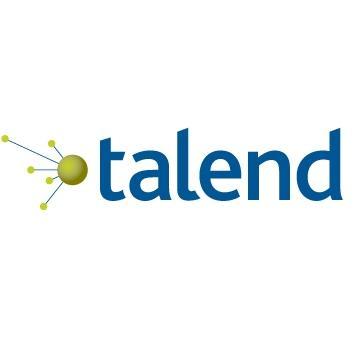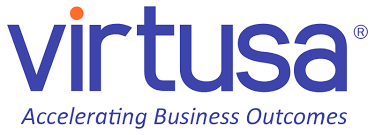Published
- 06:00 am

ABBYY, a global provider of content intelligence services, today announced the launch of ABBYY Text Analytics for Contracts, a managed service that automatically discovers insights from contracts and leases to speed up risk mitigation, obligation analysis and content migration. With Text Analytics for Contracts, businesses can leverage the entire ABBYY technology portfolio to accelerate time-to-value and successfully implement their contract lifecycle management, robotic process automation and digital transformation strategies.
ABBYY’s human-like understanding of contracts enables users to speed-read documents by pinpointing sections, clauses and facts for systems of records or other business processes to drive contextually informed, accelerated decision-making. The service is well suited for large and medium-sized enterprises, large-scale system integrators and independent software vendors who need to automatically leverage the intelligence embedded within sectioned documents including contracts, leases, regulatory filings and more, to augment business decision-making processes and ensure compliance with emerging regulations such as GDPR and ASC606.
“Text Analytics for Contracts empowers businesses to reduce time-to-content, automate time-to-decision and accelerate their time-to-compliance. It simplifies the use of semantic and AI technologies to automatically identify intelligence within contracts and streamlines analysis to dramatically reduce turnaround time,” comments Bruce Orcutt, Vice-President, Head of Product Marketing at ABBYY.
The service’s modular, extensible and scalable cloud-based architecture allows contract processing as well as discovery, review and analysis workflows to be easily customized – all with zero infrastructure footprint. Micro-service based workflows provide users with a highly flexible environment to perform section, obligation and compliance analysis, drawing on products and technologies from ABBYY’s portfolio of AI, NLP, recognition, and information capture technologies, as well as third-party products and services.
Text Analytics for Contracts enables clients to run teams across multiple time zones, 24/7, using multi-tier review and analysis workflows. ABBYY service personnel simplify customer engagement by taking responsibility for configuration, staging and processing of documents, to accelerate the delivery of contract-based intelligence to client personnel.
The granular level of insight is achieved using ABBYY’s comprehensive NLP technology, which combines syntax, semantics, pragmatics and machine learning to identify sections, target specified entities and understand complex structures. It provides the high level of accuracy and customization needed by attorneys dealing with complex contracts during negotiations or mergers and acquisitions, and compliance and security professionals when dealing with risk. The advanced technical capabilities are accessed through simple, intuitive interfaces that require minimal training and provide an effortless user experience.
Related News
- 06:00 am

Recent reports manifests how “smart” technology, such as voice-enabled digital devices and virtual assistants, could be shockingly blind to security threats. As per reports, researchers discovered a flaw in Amazon’s Alexa virtual assistant that enabled them to eavesdrop on consumers with smart devices – and automatically transcribe every word said, which further a text transcript is generated.
Amazon Alexa hacked – security of users’ personal info questioned
As per Checkmarx Researchers, they were able to manipulate code within a built-in Alexa JavaScript library (ShouldEndSession) to pull off the hack. The JavaScript library is tied to Alexa’s orders to stop listening if it doesn’t hear the user’s command properly. Checkmarx’s tweak to the code simply enabled Alexa to continue listening, no matter the voice request order.
The incident puts a question mark on privacy and security around voice-enabled digital services, such as Alexa. Reports suggest that Researchers from Zhejiang University developed proof-of-concept attacks to illustrate how an attacker could exploit inaudible voice commands posing potential threats to data security of users. As per reports, a sample of user’s voice can be collected in various ways, including
The vulnerability isn’t just confined to Amazon Alexa. Researchers at the University of Alabama at Birmingham revealed that voice recognition technology is susceptible to attack with voice
samples cloned from audio found in online videos (e.g. industry and YouTube) and even videos held on private cloud accounts.
To cite an example, it’s not hard to pick up a locked iPhone 4S, press the “home” button to launch Siri, and gain access to the phone through voice-activated commands and even a no-brainer(with an ill slant) today can do that. As a matter of fact, the massive market out there known for dealing with harvested emails add up to the woes. Voice-activated commands can be maliciously used to intercept and monitor calls. Further, this can be used to illicitly access mails and other private data which are put up for sale by spammers all around the globe. Given the fact that voice recognition is easier to hack than other bio-metric authentication, it can covertly nullify the security system.
Threat to Corporate World
A few other reports claim that in case of Siri, it can be hacked from a distance of 16 feet by potential hackers. Headphone cords can be used as an antenna, exploiting its wire to convert surreptitious electromagnetic waves into electrical signals that appear to the phone’s operating system to be audio coming from the user’s microphone. A paper published by IEEE states that, the possibility of inducing parasitic signals on the audio front-end of voice-command-capable devices could raise critical security impacts. Researchers at ANSSI reported that, voice-assistants like Siri or Google Now could be sent commands to download apps through malware, send phishing emails or browse through malicious websites.
Related News
- 09:00 am

xCelor, a leading provider of low-latency trading solutions, has agreed to sell its network device business line to Metamako, a provider of low-latency network devices headquartered in Sydney, Australia. The move comes as xCelor shifts focus to its applications division.
"The deal is a true win-win for both firms and the industry as a whole,” stated Rob Walker, CTO of xCelor. “Whilst Metamako strengthens its hardware business, xCelor will focus on developing cutting-edge network applications to enable latency-sensitive traders to manage bandwidth and market data effectively. We are excited about our new direction; our concentrated approach will allow us to better serve our clients."
xCelor will continue to service applications on Metamako hardware, while expanding their suite of network applications. Specifically, xCelor plans to grow its market data feed handling and bandwidth management divisions as well as the FPGA consulting services.
Rob Walker further notes, "Our hardware customers will be in safe hands with Metamako, who will provide them with many new products and areas of expertise to further expand their business. Our applications customers will benefit from a further emphasis on our software engineering that continues to set us apart from our competition."
Related News
- 04:00 am

Talend, a global leader in cloud and big data integration solutions, announced that the latest version of Talend Data Fabric is now certified for version 6.0 of the MapR Converged Data Platform, including MapR-DB and MapR-FS.
The MapR Converged Data Platform is the industry's only enterprise-grade software solution that unifies big data and open source technologies with fast, native access to global event streaming, real-time database capabilities, and web-scale storage. Together, Talend and MapR provide a unified, open source-based data storage and management platform for an array of different applications, enabling organizations to harness big data in valuable ways to drive innovation and further their digital transformations.
"Talend's powerful data integration, quality, governance, and management capabilities paired with MapR's scalable platform for managing massive quantities of structured and unstructured data, make an unbeatable solution for quickly and affordably launching high-performance big data projects," said Tom Scurlock, Worldwide Alliances and Channels Director for MapR. "Having Talend certified to run on our platform is significant for organizations looking to generate business insight through real-time big data analytics."
The latest version of Talend Data Fabric includes new MapR features such as the Open JSON Application Interface (OJAI). OJAI allows writing of JSON unstructured and semi-structured data into MapR-DB for fast search and processing. The combination of Talend Data Fabric with MapR OJAI enables powerful new business use cases such as:
- Healthcare provider claims processing: With Talend and MapR OJAI, healthcare providers can ingest, store, and rapidly search thousands of customer call center transcripts and associated metadata to help verify claims.
- Ad placement or retail floor optimization: Retailers can run analytics on notes from surveillance cameras and other digital video to optimize ad and retail floor display placements.
- Compliance in heavily regulated industries: Financial institutions can ingest, store, and run real-time analytics on all digital communications, including email, social, and call center transcripts, to detect any behavior that may affect compliance.
- Data Privacy and GDPR: Talend and MapR jointly deliver a full set of high-end capabilities to capture, discover, standardize, reconcile, certify, protect, locate and publish personal data.
"With increasing regulation, more and more financial and other regulated institutions are required to record, capture, audit and maintain every single customer interaction," said Jean-Michel Franco, senior director, data governance product marketing, Talend. "MapR provides a highly secured environment that can host any data, on any cloud, where we accelerate compliance while delivering more data and insights to the business, faster"
Talend will continue to support MapR's strong security mechanisms such as Kerberos and MapR Tickets. MapR's exceptionally fine-grained, role-based permissions work with data at rest and in transit, such as streaming data.
"With Talend Data Fabric and MapR, organizations can provide data scientists with limited direct data access without engaging in the inherently risky practice of making copies," said Rolf Heimes, senior director, Global Partner Alliances, Talend. "Talend's support for MapR's powerful security and role-based permissions will be particularly valuable for organizations seeking to be GDPR compliant."
Related News
- 01:00 am

Fitbit, Inc. (NYSE: FIT) the leading global wearables brand, today announced the availability of Santander on Fitbit PayTM for UK users. The partnership opens-up contactless payment from the wrist on Fitbit smartwatches to all personal and business Santander debit and credit card users, MasterCard and Visa (excluding ATM only cash cards, Visa Top-up Debit Card and Business Visa Electron).
You can now make secure payments on the go directly from your wrist with Fitbit Ionic and Fitbit Versa smartwatches, leave your smartphone and wallet at home.
Matt Hall, Director of Banking and Unsecured Credit at Santander UK, said: “We are always looking at how we can offer our customers new ways to help them manage their money. With more people embracing a healthier lifestyle, Fitbit is the ideal partner to deliver a convenient and simple payment experience. This new method complements our existing mobile payment solutions and shows our commitment to improving the digital options available to our customers.”
Coffee-lovers rejoice, you can now add your Starbucks Card to Fitbit Ionic, or Fitbit Versa, to pay at participating Starbucks stores. Just add your 16-digit Starbucks Card number into the app to buy your morning coffee right from your wrist.
Coming in May for frequent flyers, Fitbit has also partnered with British Airways to bring the British Airways app to Fitbit OS 2.0. Get flight information, status and your boarding pass right on your wrist and take all of the hassle out of keeping tabs on your flight.
The Fitbit Ionic and Fitbit Versa have the smart features you need including: app, calendar, call and text smartphone notifications; access to Fitbit’s growing App Gallery with more than 700 popular brand, developer and Fitbit Labs apps, and customisable clock faces; and on-device music for more motivation with access to Deezer, and personal music playlists.
Related News
- 02:00 am

Torstone Technology, a leading provider of post-trade securities and derivatives processing, today announced its new brand identity – Simplifying Post-Trade Processing and offering a post-trade platform which is Fast, Flexible and Future-proof. This rebrand marks a significant step in the company’s evolution. Torstone is reinforcing who they are as an independent, agile company driving change and shaping the future of the post-trade industry.
Torstone’s rebrand comes at a time of great industry and regulatory change in global financial markets and clearly reflects its renewed focus on enabling firms to reduce their costs, achieve greater control, minimise risk, ensure compliance, and drive operational efficiency amidst this change.
This past year has seen Torstone make a series of announcements in support of client needs as market conditions have evolved. For example, in the run up to the implementation of MiFID II, Torstone added a standalone module to its flagship platform, Inferno, to help clients comply with the expanded scope of the transaction reporting obligations. Furthermore, Torstone has grown significantly, entering into new markets including the Nordics, Germany and Japan, as it continues to strengthen its footprint across the globe.
Commenting on the news, Brian Collings, Chief Executive, Torstone, said: “Torstone has always striven to provide customers with the best post-trade solutions while maintaining a consistently high level of customer service. We redesigned our corporate brand identity to reflect who we are today and to symbolize our dynamic and unswerving commitment to the industry and our customers, ensuring our solutions can meet their needs today and in the future.”
Adding to this, Payal Raina, Global Head of Marketing, Torstone, said: “Growing competition, increasing regulatory pressure and tightening margins mean sell-side firms must find new ways to do more with less. Our customers are constantly striving to control costs, drive growth and improve business performance, all while maintaining regulatory compliance. As a customer-centric business we look forward to continuing to develop our services to further simplify the complexities of post-trade through technology innovation, allowing firms to focus on their core services and spend more time with clients.”
Related News
- 01:00 am

British businesses are facing an existential crisis; business consulting firm, Virtusa, predicts that hundreds are at risk due to the explosive growth of innovative tech giants led by Baidu, Alibaba, and Tencent (BAT), and Amazon. Virtusa warns that UK firms that deliver services, such as banks and telcos, are lagging behind in the digital economy compared to firms, such as those in China, that capitalize on emerging trends in other markets where those companies, like BAT, have perfected a new, horizontal business model. BAT has brought together products and services from a range of adjacent industries with one ultimate aim – the ability to own and monetise all facets of a consumer’s lifestyle choices.
BAT has taken this horizontal expansion model and used it to incubate hundreds of companies outside of China across a dozen sectors; all dedicated to meeting every need of a billion customersthrough a single platform.
Such acquisitions enable these businesses to build detailed digital personas through which they identify every customer touchpoint that can be monetised, providing a roadmap of new industries to enter. In this way, acquisitions are now becoming consumer-driven, creating a shift in strategic business thinking. Instead of choosing markets based on specific industry knowledge, BAT selects targets based on how they fit into the overall digital landscape to appeal to convenience-hungry millennials – examples are investments made by BAT in Snapchat, Farfetch, and Lyft. As a result, Virtusa predicts that digital platforms will become the primary provider for all our lifestyle needs, with consumers processing 80 percent of their purchases through a single provider by 2025.
“In the new digital economy, intuitiveness is king – something BAT does better than anyone,” said Raj Rajgopal, president of Virtusa’s Digital Strategy Group and head of Virtusa’s China Insights Group. “Customers – especially millennials – don’t care who fulfills their order or delivers them a service. They don’t need to have a dedicated banking or telco provider, they’re perfectly happy to bank via a social media app if it works intuitively. BAT has extended this logic across all industries, and the success of these firms has been demonstrated by an astonishing 50 percent growth rate year-on-year. Their platform users can now deal with one company that can facilitate all their needs, from transport, to entertainment, to financial services – and BAT is still moving into new sectors. Firms are waking up to a world where the economy is being built around platforms, where only the fulfillment of a product or service will matter, not who fulfills it – a realisation that should serve as a wake up to all specialist businesses in the UK.”
Virtusa predicts this shift will rock the foundations many UK businesses are built on. BAT, along with American giants like Amazon, Google and Facebook, will be the dominant force that channels all future sales – weakening the UK’s global presence unless they put in place strategies now to compete. As these platforms become the conduits through which all customer interactions take place – from cashier-less stores to magic mirrors, and even hybrid messaging/payment apps – we get closer to an age where brand, heritage, and expertise pale in importance when faced against convenience and intuitiveness. This will force UK businesses into adopting a supplier relationship with platform providers that would negatively impact profit margins - unless they take steps today to adapt.
“A lot of companies will struggle to survive in the new digital ecosystem,” said Rajgopal. “The ones that plan to do so successfully will have to work through three options. Lead in the creation of a platform through a set of strategic acquisitions to provide end-to-end lifestyle services such as those provided by Alibaba or Tencent, enter into a network of strategic partnerships as a peer similar to the alliances we see in the airline industry, or transition into selling via somebody else’s platform, as many traditional retailers have with Amazon. We have created the China Insights Group to help companies analyse the competitive playbook of BAT, understand the threat they pose if these practices are adopted, prepare early on a strategy to pursue, and how to go about it.”
Virtusa’s China Insights Group was set up four months ago to identify and define the strategies that companies like BAT employ to enter different markets. The group’s analysis has resulted in the creation of playbooks for Ali Baba, Tencent, Ping An Insurance, and ZhongAn. For each playbook, CIG has developed 20 detailed use cases that lay out each company’s strategy for expansion and the capabilities they plan to use to supplant the competition. These playbooks also include how these companies determine what types of services to provide and what customer journeys to support. The goal of CIG, in conjunction with Virtusa’s Digital Business Strategy team, is not to only to help clients battle the incoming threat of these Eastern tech giants. It is also to enable firms to emulate these strategies in order to build dominance in their own respective markets.
In particular, it recommends that all firms:
- Analyse the biggest digital threats they face and ‘wargame’ a strategy ahead of a new tech giant entering their sector.
- Ensure they are tracking innovation in other markets, particularly China, to avoid falling behind the curve.
- Start building detailed and comprehensive digital personas for individual consumers.
Virtusa’s China Insights Group will continue to research and explore how Eastern innovators are achieving market dominance and will use those insights to help clients of Virtusa learn how to adopt similar strategies that will lead them to dominance in their own markets.
Regulation in western geographies will slow the expansion of these Chinese giants allowing “Facebook, Google, and Amazon to catch up and compete with them,” said Rajgopal. “But for most firms who are experts in just one industry, meeting this new challenge is going to be incredibly difficult and they need to decide on their strategy. Unfortunately there’s no magic bullet and each company has to figure out its own path – but the decision needs to be made now because in five years’ time when BAT is at the door, it’ll be too late to respond.”
Related News

Myung-Hwa Calais
Transport Market Director at FIME
Traveller expectations are at an all-time high. see more
- 04:00 am

Technological innovations are enabling institutions to merge their Finance, Risk and Regulatory Reporting (FRR) functions into a set of processes to help meet the twin demands of regulatory compliance and a competitive commercial landscape. That’s according to a new white paper (Integrating finance, risk and regulatory reporting through comprehensive data management) from Wolters Kluwer which illustrates how a dedicated FRR data warehouse that links risk, finance and other key functions to merge old systems with new ones, will provide banks with a competitive advantage by integrating finance, risk and regulatory reporting duties.
One of the most challenging data management burdens facing banks globally is rooted in duplication. The evolution of regulations has left banks with various bespoke databases across five core functions: credit, treasury, profitability analytics, financial reporting and regulatory reporting, with the same data appearing and processed in multiple places. This hodgepodge of bespoke databases simultaneously leads to both the duplication of data and processes, and the risk of inconsistencies.
The idea, therefore, behind the integration of finance, risk and regulatory reporting functions is that sound regulatory compliance and sound business analytics are manifestations of the same set of processes. “Satisfying the demands of supervisory authorities and maximizing profitability and competitiveness in the marketplace involve similar types of analysis, modeling and forecasting,” comments Inga Rottmann, Vice President and Head of Global Marketing at Wolters Kluwer’s Finance, Risk & reporting business and one of the authors of the paper. “Each is best achieved, therefore, through a comprehensive, collaborative organizational structure that places the key functions of finance, risk and regulatory reporting at its heart.”
What’s more, the immense demands for data, and for a technology solution to manage it effectively, have served as a catalyst for a revolutionary development in data management, particularly as regards Regulatory Technology, or RegTech. Although the definition is somewhat flexible, RegTech is effectively the application of cutting-edge hardware, software, design techniques and services to the idiosyncratic challenges related to financial reporting and compliance.
“The myriad advances that fall under the RegTech rubric, such as centralized FRR or RegTech data management and analysis, data mapping and data visualization, are helping financial institutions to finally get out in front of the stringent reporting requirements,” comments Steve Hostettler, Director of Technology at Wolters Kluwer’s Finance, Risk & Reporting business and an author of the white paper. “Centralization can now accomplish their efforts to integrate finance, risk and regulatory reporting duties more fully, easily and creatively.”
But RegTech has also proved problematic. Many RegTech solutions currently on the market can be highly specialized and localized products and services from small providers. “That encourages financial institutions to approach data management deficiencies gap by gap, project by project, perpetuating the compartmentalized, siloed thinking that was the scourge of regulators and banks alike after the global crisis,” notes Will Newcomer, Vice President of Product & Strategy for Wolters Kluwer’s Finance, Risk & Reporting business and author of the paper.
Rather, Wolters Kluwer experts argue, banks would be well advised to build a centralized, dedicated and focused FRR data warehouse that can chisel away at the barriers between functions. And this is the case even at institutions that have been slow to abandon a siloed organizational structure reinforced with legacy systems.
The path to effectively transforming data management, the white paper continues, “is to combine tried and true processes and solutions with the selective deployment of new technologies with the target to remove undesirable duplication of both rules and storage.” Having clean, integrated and standardized data in one central warehouse confers advantages such as the elimination of data duplication and the elimination of analytical process duplication. And data lineage is crucial here, the white paper adds.
“Integrating finance, risk and regulatory reporting is likely to be a long and arduous journey, but one that will help an organization get where it needs to go and become what it needs to be: a highly competitive business that has greater command of its commercial and supervisory environments and is better prepared for the future,” Rottmann adds. “Competitive pressures remain high, and regulators keep raising the bar for compliance reporting. They continually demand more data, more often, in finer detail and with greater accuracy. The industry and the technology that supports it strained until recently to keep pace, but that is changing thanks to developments in RegTech.”
Related News
- 08:00 am

Capitolis, the pioneering technology provider for the capital markets, announces today it is live with its foreign exchange credit switching service, Capitolis Switch.
Capitolis’ mission is to address capital markets constraints in the financial system. With the launch of Capitolis Switch, a key credit issue is addressed, enabling the unbundling of execution, processing, capital and risk in foreign exchange prime broking.
Large global systemically important banks currently provide best in class execution and processing, bundled with credit to clients. With Capitolis Switch the provision of credit is expanded to include a much broader universe of banks and investors. It allows the large banks to maximise their prime brokerage infrastructure capability and their substantial networks. For credit providers, this is an opportunity to work with new clients while utilizing the scale of processing via the coupled technology of deal processors and Capitolis. The solution effectively brings all of these parties together, for the benefit of the whole market.
Gil Mandelzis, CEO of Capitolis, said: “We are excited to be live with Capitolis Switch and to be working with institutions of the calibre of Citi, Jefferies and FXCM who have demonstrated their innovative thinking in partnering with us to bring this service to the financial markets. This is a completely new approach to the provision of credit in capital markets transactions. We believe it is the first and important step in Capitolis’ vision to better connect appropriate capital with collaborative technology solutions to accelerate growth and enhance economic performance for all involved.”
“We welcome technology developments that enable new flexible credit models which strengthen our FX prime brokerage service.” said Sanjay Madgavkar, Managing Director and Global Head of FX Prime Brokerage at Citi. “We’re excited by the potential of Capitolis to drive change and are pleased to offer this solution to our clients.”
“Jefferies is committed to making innovative technology available to its clients, and we are thrilled to be a first mover credit provider on the Capitolis platform”, said Brandon Mulvihill, Global Head of FX Prime Brokerage at Jefferies. “Capitolis provides us yet another tool to add strategic value to our clients.”
Brendan Callan, CEO of FXCM Group, said: ‘FXCM has been at the forefront of offering cutting edge trading tools for clients for many years. With this new partnership with Capitolis, we foresee many benefits for liquidity enhancement by the expansion of the credit provision model.”









